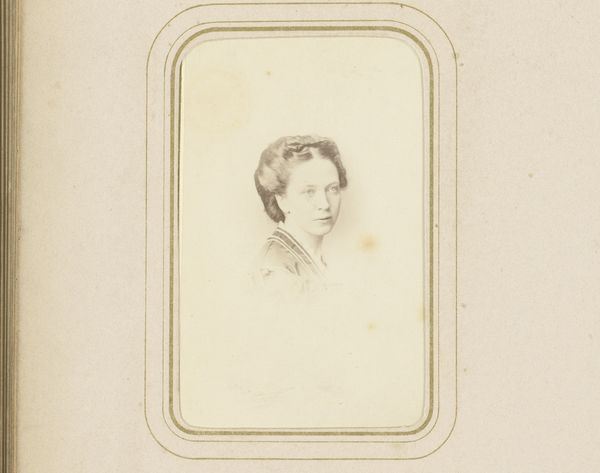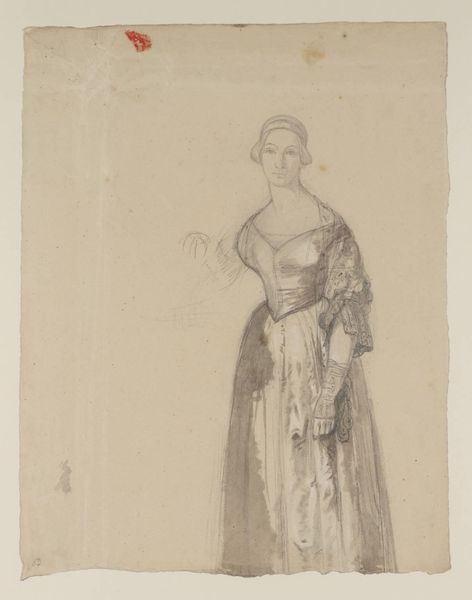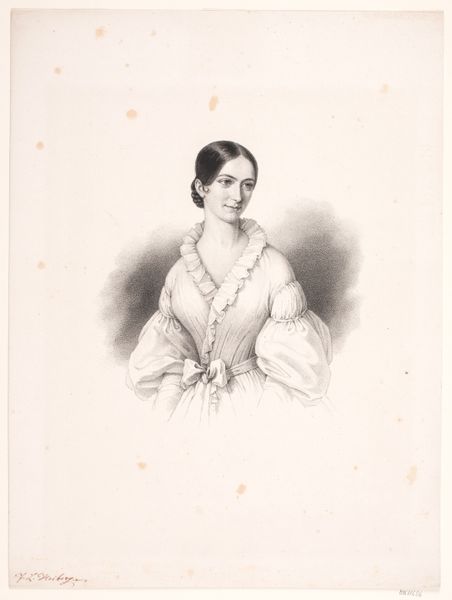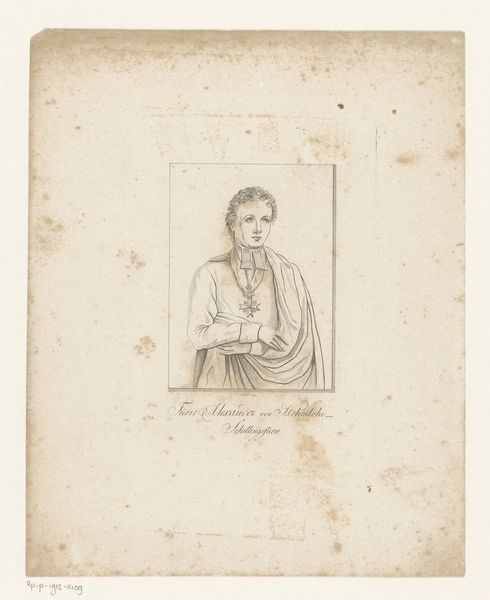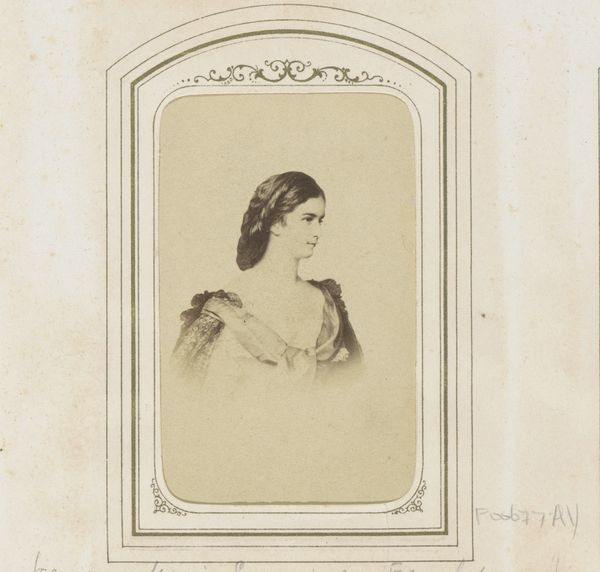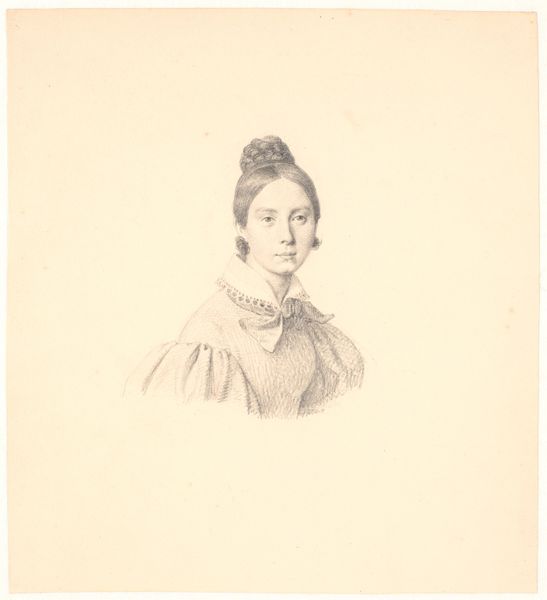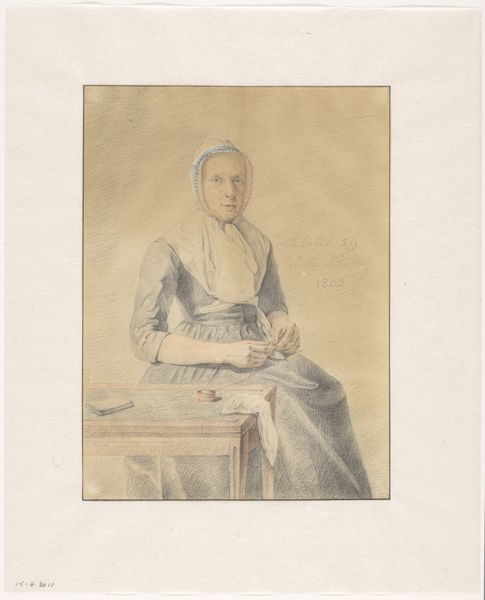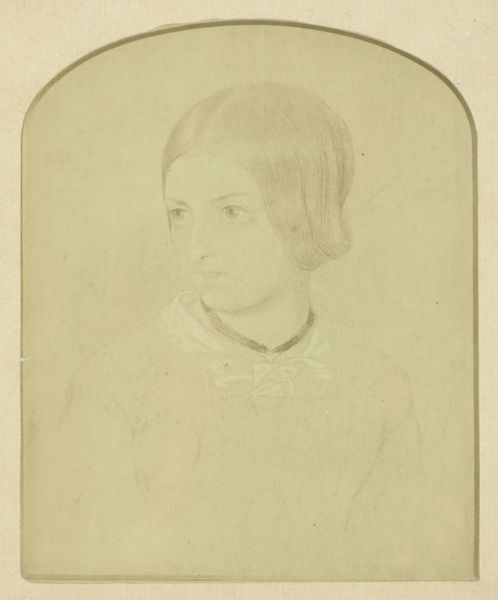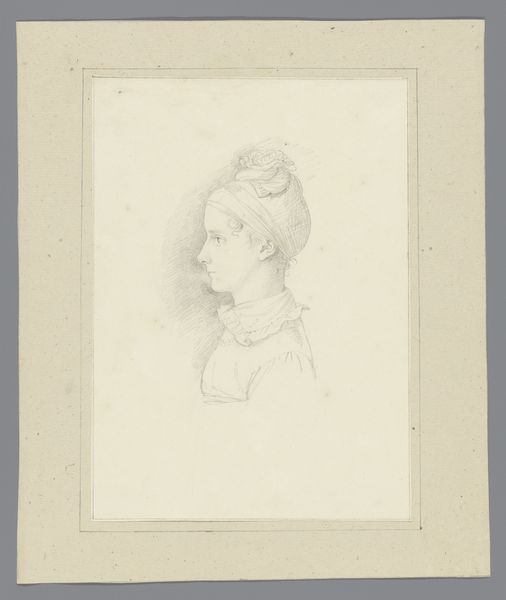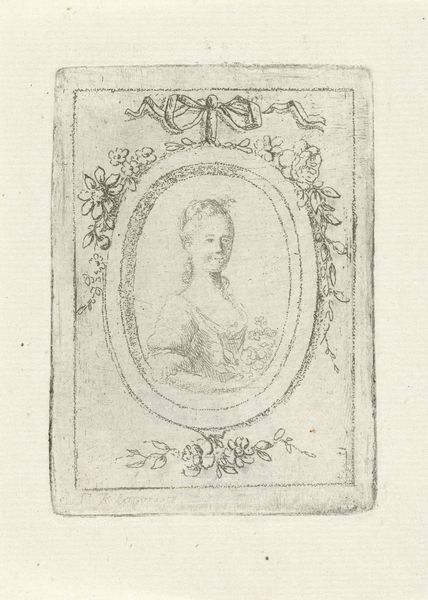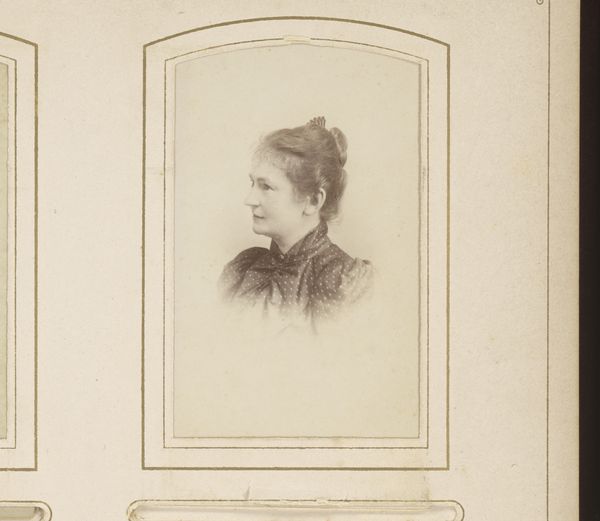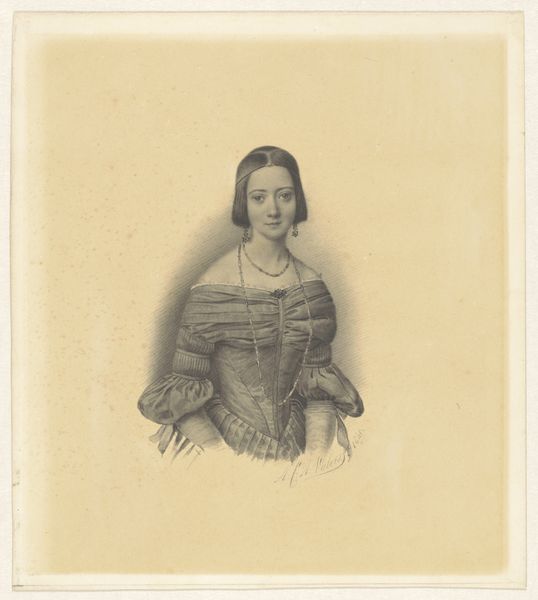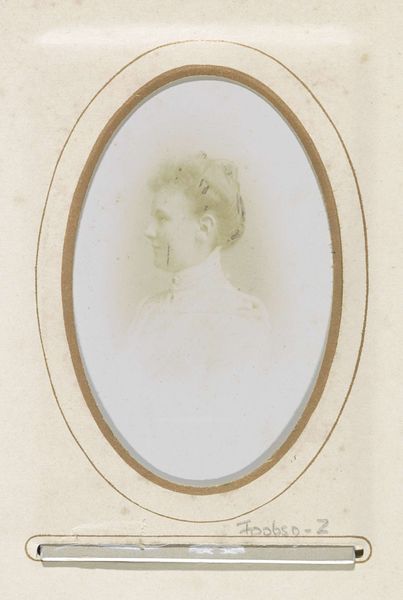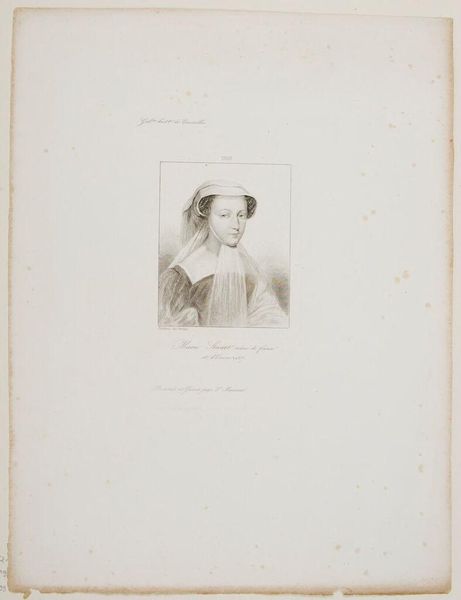
drawing, pencil
#
portrait
#
drawing
#
romanticism
#
pencil
Copyright: Public Domain
Curator: Let’s turn our attention to this intimate portrayal—a pencil drawing titled "Brustbild der Sarah Palliser," created in 1849. Editor: There's a gentleness here, a quiet simplicity in its lines. The delicate frame feels like both an adornment and a constraint, highlighting her isolation. Curator: It's believed to depict Sarah Palliser, likely a member of the artist G. Palliser’s social circle, situated within the Romanticism movement, a time marked by emphasis on individual emotion and inner experience. Editor: Pencilwork gives it that preliminary feel, doesn't it? Like a study, something personal. I'm interested in the process—the material choices and the social implications of creating art with a seemingly humble medium in 19th century Germany. Curator: The fact that this drawing wasn’t destined for public consumption perhaps affords us a more vulnerable glimpse of Sarah. One could explore the power dynamics implicit in portraiture, especially the way in which women are represented through a male gaze. What does it mean to be objectified, idealized, and yet silenced in a static image? Editor: Silenced, perhaps. Or maybe the stillness emphasizes the subject's control over her representation. She seems deliberately composed, but look how soft the material feels, as though she's barely sketched onto the paper! The material speaks of intimacy, revealing a sense of labor involved in its making, how that affects our relationship to the image. Curator: That's an interesting read of her presence; it invites us to question how notions of femininity and agency were visually negotiated at this particular historical juncture. Editor: Exactly! Seeing the weave of the paper, the tentative strokes—it collapses the distance between her time and ours. I'm grateful for the glimpse it offers. Curator: Agreed, this artwork prompts vital discussions about the interwoven threads of identity, gender, and representation in art history. It enriches our understanding.
Comments
No comments
Be the first to comment and join the conversation on the ultimate creative platform.
